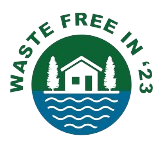Water Hyacinth Biochar: A Sustainable Solution for Soil and Agriculture (Kassa et al., 2025)
Water hyacinth is an invasive plant that grows quickly in lakes and rivers, causing serious environmental and economic problems. It blocks waterways, reduces fish populations, and makes water quality worse. Managing this plant is expensive and difficult. However, researchers have found a smart way to turn water hyacinth into biochar, a type of soil amendment that helps plants grow. This method not only controls the spread of water hyacinth but also improves soil health and increases crop yields, providing both economic and environmental benefits.
How Biochar is Made
Scientists collected water hyacinth from Lake Tana in Ethiopia and dried it in the sun for 30 days. Then, they heated it in a special process called pyrolysis, where organic material is burned at high temperatures without oxygen. The water hyacinth was heated at 300°C for 40 minutes, producing biochar with 44.6% yield. This process removed harmful substances while keeping valuable nutrients like nitrogen, phosphorus, calcium, and potassium, which are essential for plant growth.
Economic Benefits of Biochar
- Cheaper Alternative to Chemical Fertilizers – Farmers spend a lot of money on synthetic fertilizers. This study found that using 2,500 kg of water hyacinth biochar (WHBC) per hectare provided nearly the same crop yield as chemical fertilizers. This means farmers can save money while still growing healthy crops.
- Increased Teff Crop Yield – Teff, an important grain in Ethiopia, grew just as well with biochar as with mineral fertilizers. Farmers using WHBC saw good results in plant growth, fresh weight, and grain production.
- New Job Opportunities – Harvesting water hyacinth and turning it into biochar can create business opportunities for local communities. People can collect the plant, process it into biochar, and sell it to farmers, helping both the environment and the local economy.
Environmental Benefits of Biochar
- Solving the Water Hyacinth Problem – Water hyacinth spreads quickly and is difficult to remove. Instead of dumping it, turning it into biochar reduces pollution and prevents further damage to water ecosystems.
- Improved Soil Quality – Biochar makes the soil better at holding water and nutrients, which is important in dry areas. It also reduces soil acidity, helping crops grow better.
- Lowering Chemical Use – Since biochar provides essential nutrients, farmers can use fewer chemical fertilizers, reducing pollution from runoff into rivers and lakes.
- Trapping Carbon – Biochar stores carbon in the soil instead of releasing it into the air, helping to reduce greenhouse gas emissions and slow down climate change.
Conclusion
This study shows that biochar made from water hyacinth is a sustainable and affordable way to improve farming. It provides a low-cost fertilizer alternative, improves soil health, and helps manage an invasive plant, creating economic opportunities and protecting the environment. Large-scale production of WHBC could help farmers grow more food while keeping lakes and rivers clean.
Read the full paper here:
Got questions?
